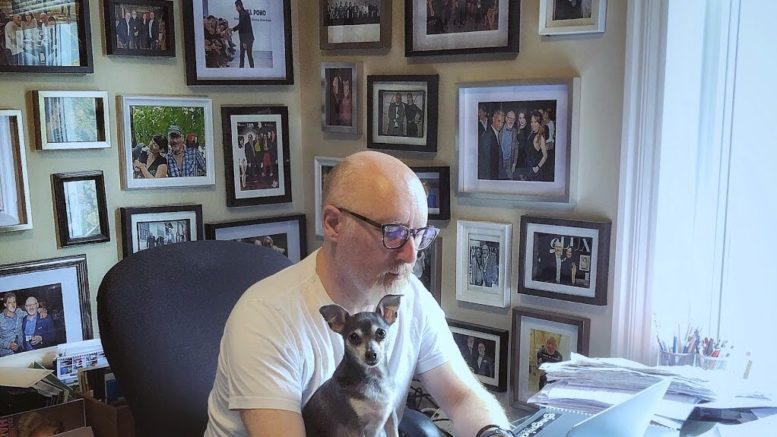As the spread of COVID-19 keeps people at home, fashion houses across the globe have been forced to cancel shows with live audiences.
Recently, Chanel debuted their 2021 cruise wear line by releasing it online on a digital platform. The show was not well received, and the New York Times described it as “a disappointment on many levels.”
Fashion Broker and Board of Director for Commonwealth Fashion Council, Roger Gingerich, 52, said in a Zoom interview from his home in Stouffville, Ont., “Twenty per cent of the collection gets the oohs and ahhs, but the other 80 per cent is dead silence.”
His job is to keep fashion industry alive during COVID-19, but he’s finding digital technology a challenge.
This “80/20” rule that Gingerich describes, speaks to the greater atmospheric pleasure that attending such events brings to journalists, and is often the inspiration for their news coverage.
“As a journalist, you know, you feed off of that [energy],” Gingerich said.

IMAGE PROVIDED BY: ROGER GINGERICH
The reaction of the crowd is a telltale sign of which designs are the most well received. You also experience the full effects of the show’s lighting and the flashes of the photographer’s cameras. It is these subtle nuances, Gingerich says, that make being in a live audience an irreplaceable experience.
“You don’t get that from a virtual standpoint,” Gingerich said.
A man of many hats, Gingerich is also the Chief Executive Officer at the Canadian International Fashion Film Festival (CANIFFF).
Fashion films are the less expensive alternative to runway shows, allowing designers to showcase their collections during fashion week at a fraction of the price.
“Runways are incredibly expensive and the world is steering away from runways,” Gingerich said.
When asked about whether fashion films will be the newest source for stories in replacement of runways, or if local reporting is where the industry will steer towards, Gingerich replied with, “unfortunately, journalism and journalists…go where the buzz is.”
“At the end of the day,” Gingerich says, “[journalists], or newspapers, or outlets, want a click through – they want sponsored content.”
COVID-19 has put many journalists out of work, most of which are freelancer writers and contributors to local newspapers. Within larger media companies, the fashion and entertainment sections of newspapers are often the first sections to have significant cuts made.

IMAGE PROVIDED BY: ROGER GINGERICH
Grazia columnist Barry Rodgers was recently told by a colleague that fashion journalism is a dying industry. However, Rodgers, in his preface before an interview with lifestyle editor Bandana Tewari, corrects his colleague and claims that fashion journalism is an “evolving one” due to factors like social media.
Currently, every Tuesday and Thursday on Instagram Live, Gingerich will do an interview with some of the world’s most fashionable figures, and leaders in the industry.
From topics like Black-owned businesses, to overseas brands like Australian handknitting line KOCO, Gingerich continues these discussions online on his platform in a way that is intrinsically journalistic.
For him, having the chance to share his thoughts with others, both with the guest and with the viewers, is how Gingerich keeps “the discussions alive” he said.
“Fashion journalism has been virtual for a long, long, long, long time.[Fashion] is also one of our essentials of life – food, shelter, and clothing,” Gingerich said.
Stories on local brands, N-95 masks or businesses that possess humanitarian aspects need fashion journalists. As Gingerich mentioned, clothing is an essential part of our life – it reflects identity, the times we’re in, and who we want to be seen as. Without fashion journalists, these stories would be left untold.

